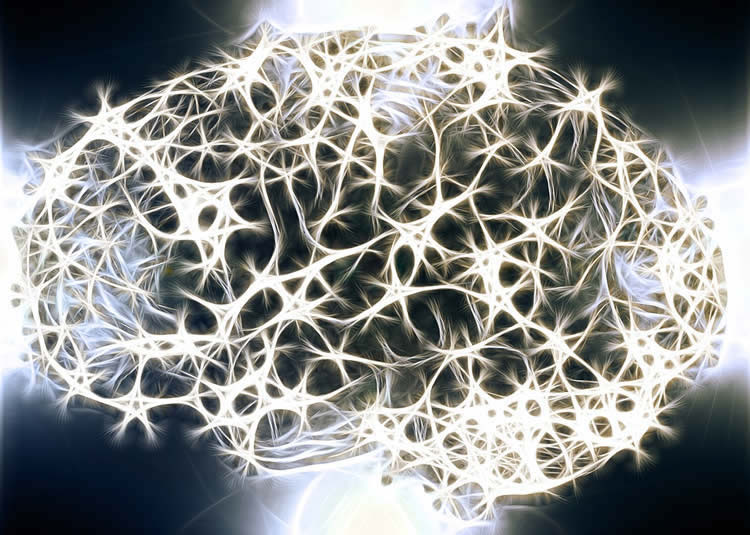Summary: Researchers report reduced connectivity between the thalamus and prefrontal cortex may be a common feature in those with Schizophrenia.
Source: Vanderbilt University.
Executive cognitive functions — abilities that include working memory and underlie mental control and self-regulation — are impaired in schizophrenia. Current pharmacological and behavioral interventions have only modest pro-cognitive effects.
In studies of individuals with schizophrenia and healthy participants, Neil Woodward, PhD, and colleagues tested executive functions and used imaging (diffusion-weighted MRI) to quantify connections between brain regions that support executive functions.
They report in the March 15 issue of Biological Psychiatry that connectivity between the prefrontal cortex and the thalamus is reduced in schizophrenia. The reduced connectivity correlated with impaired working memory but not with other executive functions (cognitive flexibility and inhibition). They also found increased connectivity between the thalamus and the somatosensory and occipital cortices in schizophrenia.

The findings are consistent with other studies that implicate disrupted prefrontal cortex-thalamic function in the pathophysiology of schizophrenia, and they suggest that the connection between these brain regions may be an important target for pro-cognitive interventions.
Funding: This research was supported by the National Institutes of Health (grants MH102266, RR024975).
Source: Leigh MacMillan – Vanderbilt University
Publisher: Organized by NeuroscienceNews.com.
Image Source: NeuroscienceNews.com image is in the public domain.
Original Research: Abstract in Biological Psychiatry.
doi:10.1016/j.biopsych.2017.09.022
[cbtabs][cbtab title=”MLA”]Vanderbilt University “Brain Connections in Schizophrenia.” NeuroscienceNews. NeuroscienceNews, 8 March 2018.
<https://neurosciencenews.com/brain-connections-schizophrenia-8609/>.[/cbtab][cbtab title=”APA”]Vanderbilt University (2018, March 8). Brain Connections in Schizophrenia. NeuroscienceNews. Retrieved March 8, 2018 from https://neurosciencenews.com/brain-connections-schizophrenia-8609/[/cbtab][cbtab title=”Chicago”]Vanderbilt University “Brain Connections in Schizophrenia.” https://neurosciencenews.com/brain-connections-schizophrenia-8609/ (accessed March 8, 2018).[/cbtab][/cbtabs]
Abstract
Prefrontal-Thalamic Anatomical Connectivity and Executive Cognitive Function in Schizophrenia
Background
Executive cognitive functions, including working memory, cognitive flexibility, and inhibition, are impaired in schizophrenia. Executive functions rely on coordinated information processing between the prefrontal cortex (PFC) and thalamus, particularly the mediodorsal nucleus. This raises the possibility that anatomical connectivity between the PFC and mediodorsal thalamus may be 1) reduced in schizophrenia and 2) related to deficits in executive function. The current investigation tested these hypotheses.
Methods
Forty-five healthy subjects and 62 patients with a schizophrenia spectrum disorder completed a battery of tests of executive function and underwent diffusion-weighted imaging. Probabilistic tractography was used to quantify anatomical connectivity between six cortical regions, including PFC, and the thalamus. Thalamocortical anatomical connectivity was compared between healthy subjects and patients with schizophrenia using region-of-interest and voxelwise approaches, and the association between PFC-thalamic anatomical connectivity and severity of executive function impairment was examined in patients.
Results
Anatomical connectivity between the thalamus and PFC was reduced in schizophrenia. Voxelwise analysis localized the reduction to areas of the mediodorsal thalamus connected to lateral PFC. Reduced PFC-thalamic connectivity in schizophrenia correlated with impaired working memory but not cognitive flexibility and inhibition. In contrast to reduced PFC-thalamic connectivity, thalamic connectivity with somatosensory and occipital cortices was increased in schizophrenia.
Conclusions
The results are consistent with models implicating disrupted PFC-thalamic connectivity in the pathophysiology of schizophrenia and mechanisms of cognitive impairment. PFC-thalamic anatomical connectivity may be an important target for procognitive interventions. Further work is needed to determine the implications of increased thalamic connectivity with sensory cortex.






